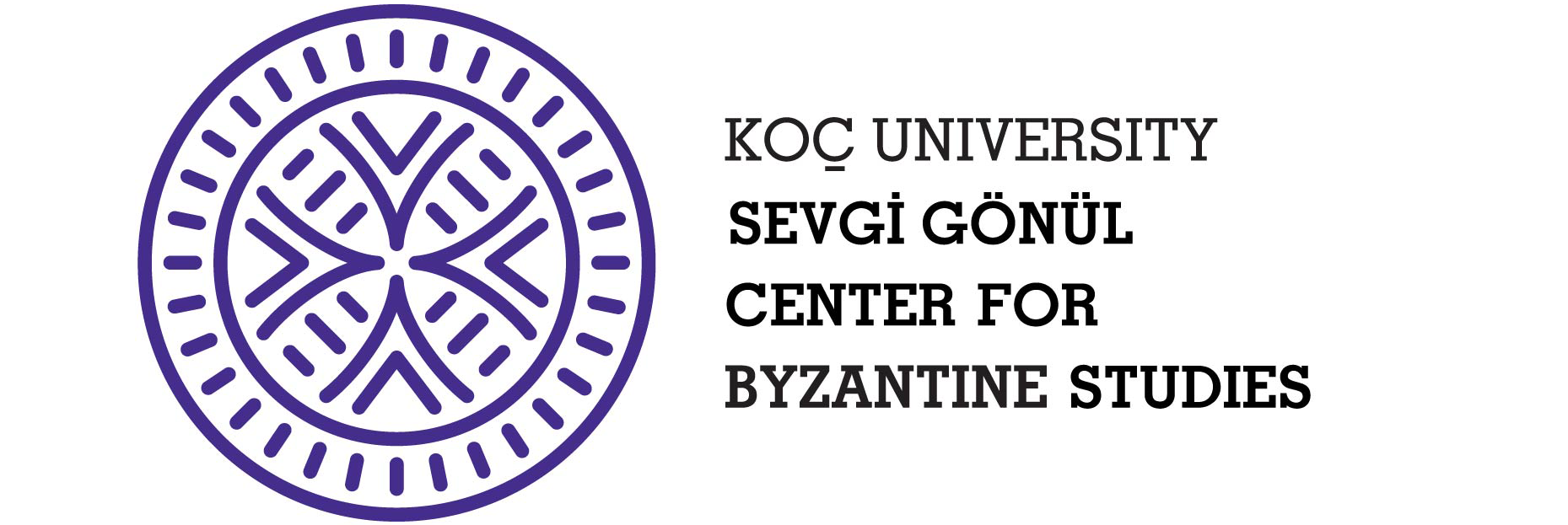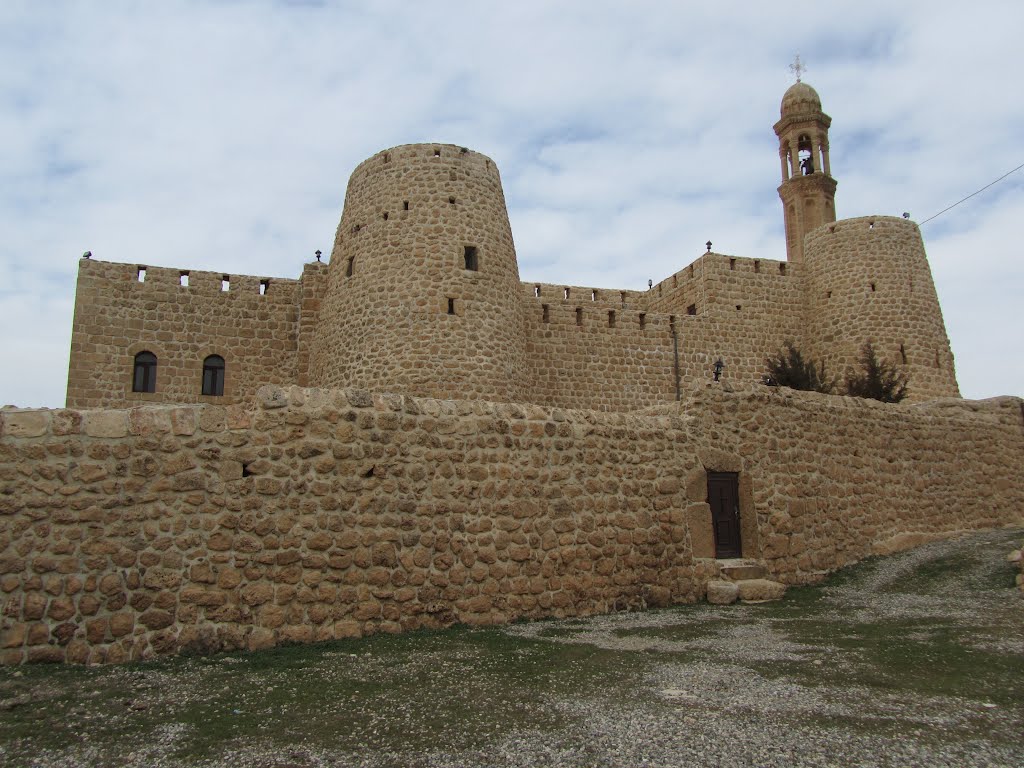
Dr. Alexandre Varela / The Mor Hadbshabo Church and its Secondary Chapels in Gülgöze
The village of Gülgöze (‘Ainwerd’ in Syriac) is located in the historical region of the Tur ‘Abdin, near Midyat in southeastern Anatolia. The site presents several elements which are important in the understanding of the cultural heritage of the Syrian Orthodox Church and of the north Mesopotamian plain in general. Despite its importance, the site was not deeply studied by previous scholars. The most important survey is the Mor Hadbshabo Church, an important fortified church with a rich sculptural decoration and strong walling system. The project aims to study this decoration and fortification, crossing field analysis with the study of the unpublished inscriptions, literary sources and with a comparison with several other religious buildings. (Period: September 2019 – June 2020)
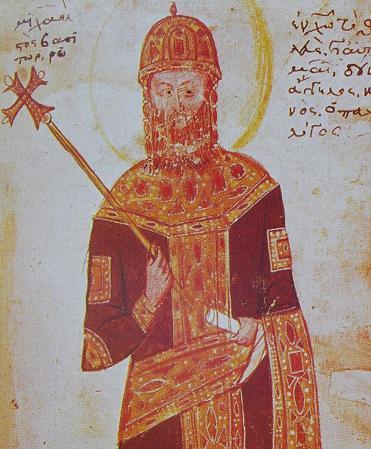
Dr. Milan Vukašinović / Voices of Anatolia: Narrative Constructions of Self and Space in the 13th Century
The project aims to explore the narrative strategies used for the constitution of the self in four autobiographic texts from the 13th century: Nikephoros Blemmydes, Michael VIII Palaiologos, Arsenios Autoreianos, and Gregory of Cyprus. The documents from the Lembos cartulary reveal that the Anatolian space was inhabited and constructed by the principal actors of these narratives. The main idea is to reexamine the fixed notions of the Byzantine self-modeling and self-representation, as well as the usual approaches to historical space as a passive entity. The narrative and spatial practices will be observed as two kinds of cultural and societal actions, that can overlap and influence each-other. Analyzing these two sets of practices together will allow us to transcend the entrenched chronological, geographical, generic, and theoretical divisions in Byzantine history and devise a way to better understand the voices of 13th century Anatolia. (Period: September 2019 – June 2020)

Dr. Hatice Demir / The Effect of Byzantine Architectural Structures in Antalya Kaleiçi, Oldtown on the Development of Seljuk and Ottoman Urbanization
Monograph studies dealing with Byzantine period structures located in Antalya Kaleiçi are limited in number. This work has studied the impact that religious buildings from the Byzantine period have had on the urban texture of the Turkish period, on urbanization, and on the demographic structure. Religious buildings have formed the main lines of urbanization during both Byzantine and Turkish periods. In this context, throughout history new religious places were constructed over older ones, or one type of religious temple converted into another. This research aims to ascertain the contribution of Antalya Kaleiçi Byzantine period religious structures on urbanization. (Period: May 2019 – November 2019
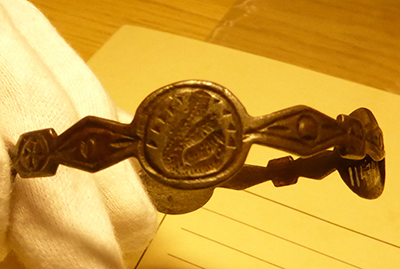
Dr. Deniz Sever-Georgousakis / Against All Evil: Byzantine Portable Objects of Private Protection from Türkiye
The research focuses on the concept of apotropaic, spiritual, and/or magico-medical protection and its development in Byzantium over the centuries, a concept reflected in the material world of Byzantium. The integral part of the research explores the function of images and inscriptions on objects of protection. It crosses fields of anthropology and art history to understand the connection between images and inscriptions, and their role as mediators of narratives in scriptures and oral traditions. The study of these objects provides an insight into the fears and expectations of Byzantine society and how the Byzantines dealt with their worries in their daily lives. (Period: September 2018 – June 2019)
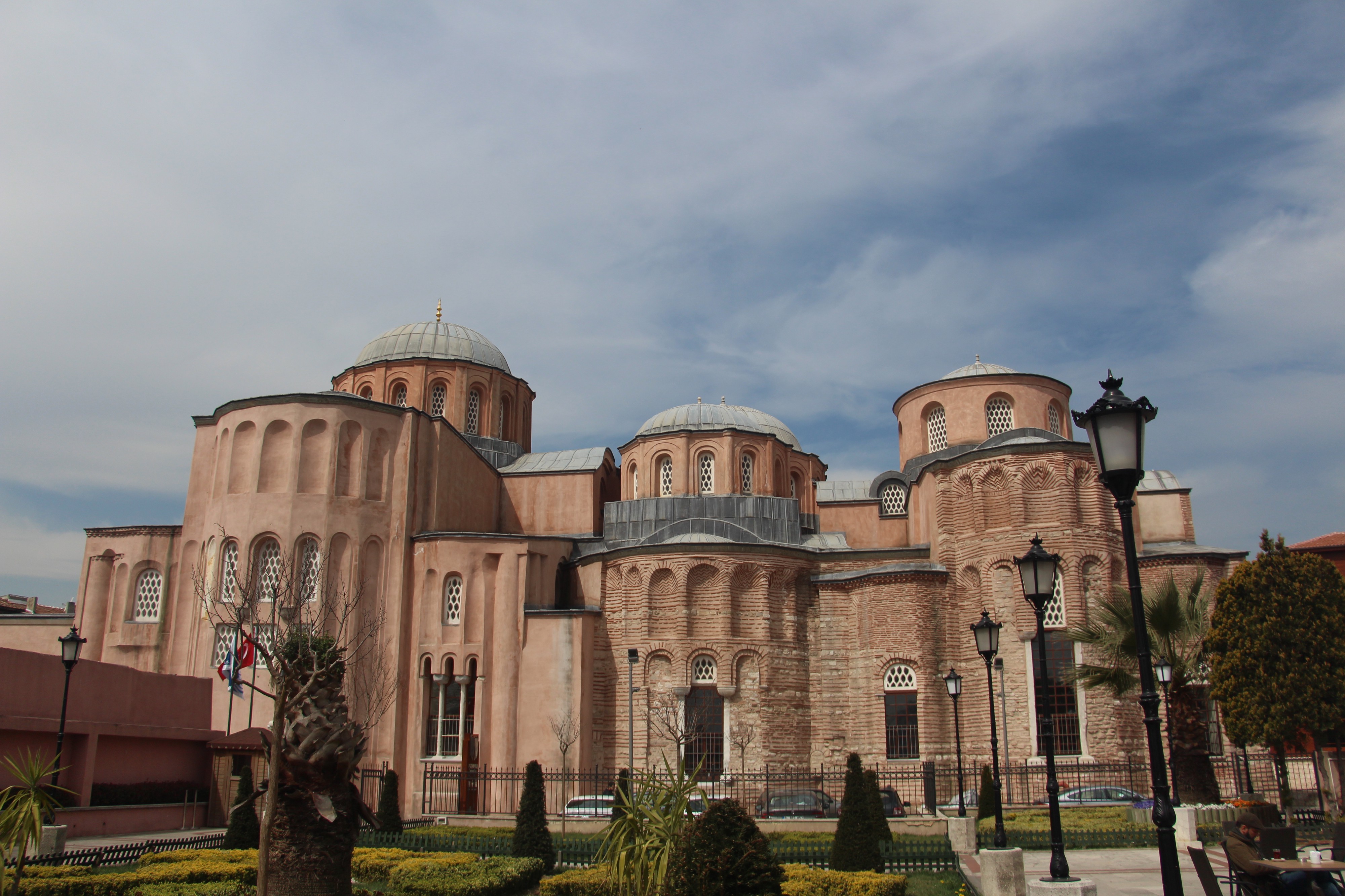
Dr. Nebojša Stanković / Narthexes of Middle Byzantine Monastic Churches in Constantinople, Bithynia, Cappadocia, and Mount Athos: Architecture and Function within the Stoudite Monasticism
Nebojša Stanković is an architectural historian (PhD, Princeton University) and an architect (M Arch., University of Belgrade). Dr. Stanković’s current research takes these issues further while turning to a wider geographical area of distribution of the Middle Byzantine (9th to 12th centuries) monastic narthex. The study is conceived as an examination of both architecture and written sources, aimed at exploring similarities and differences in the form and function of the narthex between several important monastic centers of the time and within the Stoudite monastic tradition. The project explores the extent to which function shaped the spatial organization and architectural form. (Period: September 2018 – June 2019)
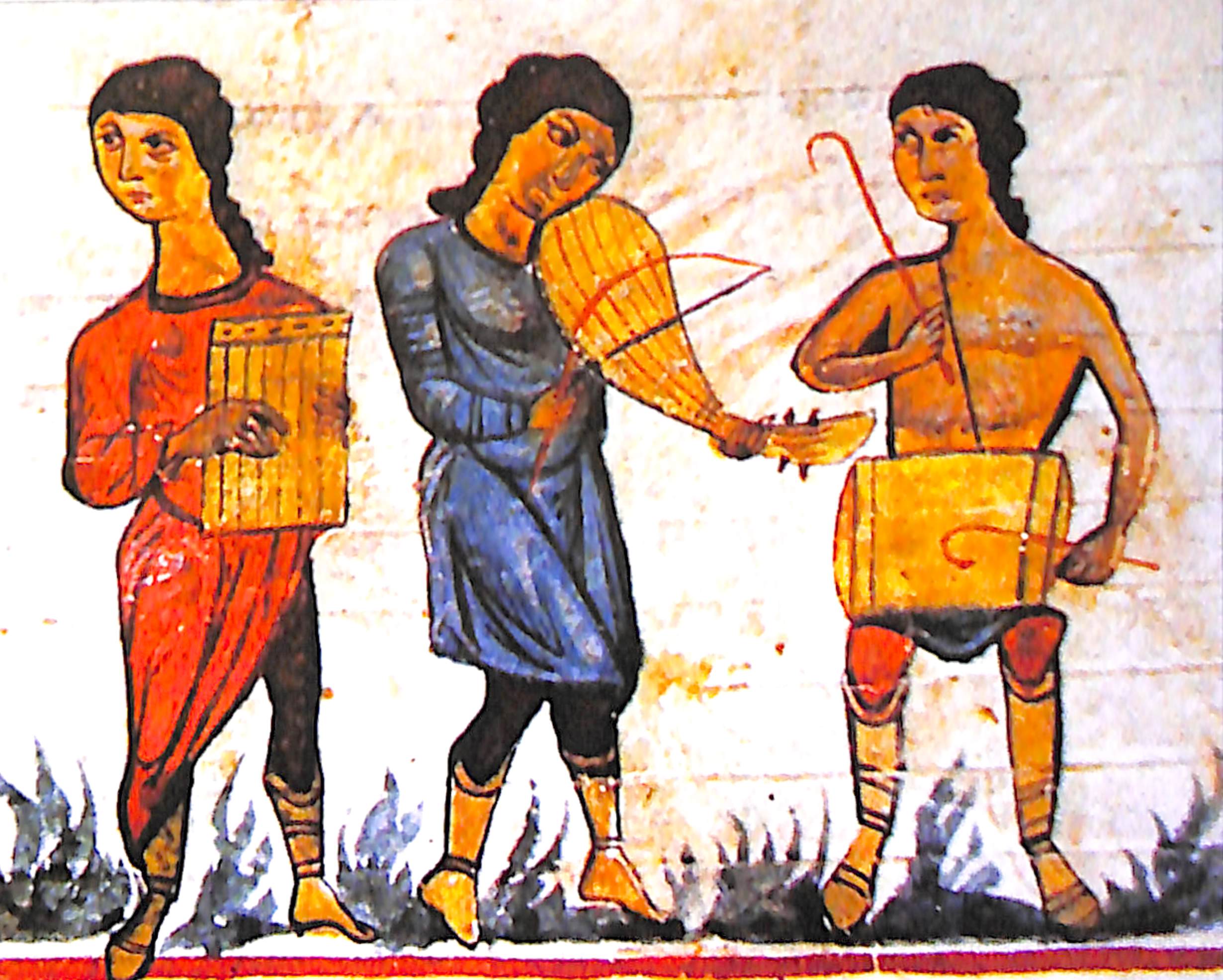
Dr. Antonios Botonakis / Byzantine Musical Instruments
Dr. Botonakis holds a PhD in Byzantine Musicology from the National and Kapodistrian University of Athens, Department of Music Studies, Greece (2013) and music diplomas in both Eastern and Western notation systems. His task in the project is to collect data and examine which musical instruments were present and in use during the Byzantine Era at the Byzantine Empire, based on numerous historical artifacts of that period. He will also participate in the creation of an elaborate documentation of Byzantine Musical Instruments through the design and production of a web portal, that will include by-products such as a fully integrated database for researchers and a digital exhibition for the wider public. (Period: November 2018 – April 2020 )
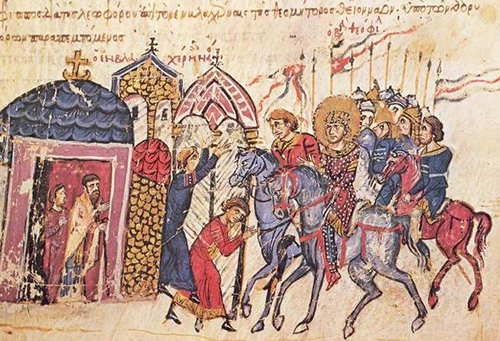
Dr. Roman Shliakhtin / The City Walls of Istanbul
His primary task in the project is to survey Byzantine and Russian sources and collect data that relates to the Walls in the Byzantine and post-Byzantine period. Secondly, he participates in the detailed survey of the Land Walls of Constantinople that implies a description of the whole wall, tower by tower. At a later stage, the team will unite the source database with the results of the ground survey to form a deep-map portal. The web portal will help Istanbulites and guests of the city to orient themselves on the ground and to know more about the Land Walls, a UNESCO monument that constitutes part of the cityscape since Late Antiquity. (Period: December 2017 – January 2019)
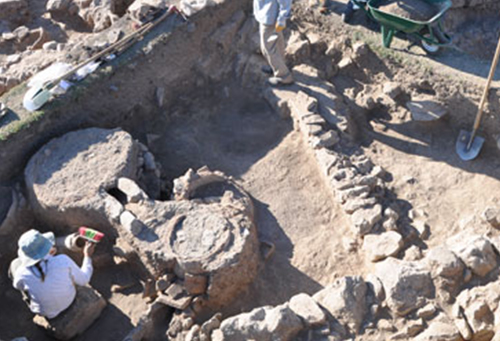
Dr. Mustafa Nuri Tatbul / Changing Dynamics in the Middle Byzantine Komana Pontica, Central Black Sea, Türkiye
Dr. Tatbul holds a PhD in Settlement Archaeology from Middle East Technical University (2017), Türkiye and an MA in Archaeology from Leiden University, The Netherlands (2007). His research project “Changing Dynamics in the Middle Byzantine Komana Pontica, Central Black Sea, Türkiye” aims to enlighten the social, political, economic and religious changes and interactions between Byzantine and Turkic communities during the penetration of Turkic tribes into Anatolia and under further Danishmend/Seljuk rule. He conducts an initial literature survey that will guide him in the future planned intensive surface surveys in the previously identified Middle Byzantine church sites during the extensive surveys by Burcu Erciyas between 2004–2008 in the territory of Komana Pontica. The future intensive survey data, with the guidance of literature survey, in the church sites will try to explore their function, character, contemporaneity and if any hierarchical order, their fate during the penetration of Turkic tribes and Danishmend/Seljuk rule and site preference strategies under the changing dramatic political, social, economic and religious conditions of the period. The research method will integrate literature survey of the period, intensive surface collection and geophysical prospection of the intended church sites and excavation data of an already excavated church site at Hamamtepe, Komana Pontica. (Period: September 2017 – June 2018)
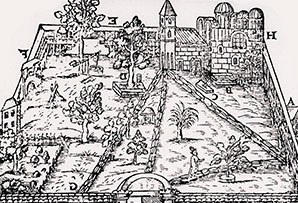
Dr. Nicholas Melvani / Monastic Topography of Late Byzantine Constantinople
The project traces the late history of the Byzantine monasteries of Constantinople within the city’s urban environment. The ultimate aim is to clarify the place of the monasteries within the urban configuration of Late Byzantine Constantinople. Research evolves around two axes: 1) The description of specific monastic complexes on the basis of textual references and material remains, 2) The inscription of the monasteries within the wider framework of Constantinople’s topography and urban landscape with the use of archaeological and mapping methods. (Period: November 2015 – April 2017)

Dr. Silvia Pedone / Contextualizing the architectural sculpture of the Middle Byzantine Age. Constantinople and its hinterland: the case of Küçükyalı
The first stage of the research is to classify and catalogue the findings dug out during the excavations of 2015 in order to have a complete record of all the materials found till date in the area of the building and the surrounding areas. In a second phase comparative researches will be carried out in other sites of Istanbul (e.g. the sculptures of the Fenari Isa Cami) and in sites chronologically close to that of Küçükyalı (Dereağzı). (Period: October 2015 – December 2016)
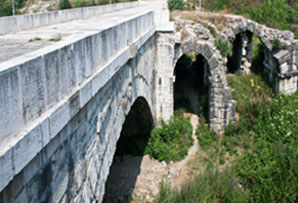
Dr. Roman Shliakhtin / The Byzantines and the Seljuk Turks in the contested landscape of Late Byzantine Bithynia: Case study on the Sakarya-Sangarius valley
The primary aim of the project is to analyze the Byzantine defense structures in the Sakarya-Sangarius valley in the late Byzantine era. Project investigates how the Byzantines used the features of late antique landscape (e.g. Justinian’s bridge) to make a claim for their share of power in Anatolia. On the basis of his previous studies, he argues that the Sakarya-Sangarius valley was not only a “contested landscape”, but also a landscape of controlled communication, which was meant not to prevent any communication between Byzantium and the Seljuk Turks, but rather to control old roads and river-crossings. (Period: September 2016 – June 2017)

Dr. Siren Çelik / A Historical Biography of Manuel II Palaiologos (1350-1425)
Siren Çelik obtained her PhD in August 2016 at the University of Birmingham with the dissertation titled “A Historical Biography of Manuel II Palaiologos (1350-1425)”. Manuel was not only an emperor, but also a significant author who produced a massive oeuvre consisting of theological, philosophical and literary works. Most of these works have not been studied by scholars; with this biography, it is hoped that Manuel earns, who has been neglected as an author, a place in Byzantine literature. The thesis discusses Manuel’s literary style and self-presentation, as well as his depictions of other figures. Study also focuses on his position in Byzantine philosophical and theological tradition. Through a close reading of Manuel’s complete oeuvre and various other primary sources, the study tries to construct an in-depth portrait of the emperor as a ruler, a personality and an author, as well as offering an insight into his world and times. (Period: September 2016 – June 2017)

Dr. Caroline Laforest / Burial Customs in Roman and Proto-Byzantine Asia Minor: An Archaeo-Anthropological Perspective
In 2010 Dr. Laforest launched the excavation of a roman house-tomb in the site of Hierapolis of Phrygia for four years. This project became an opportunity to undertake a Ph.D. between the University of Bordeaux, France, and the University of Milan, Italy (supervisors: D. Castex and Pr. D’Andria). The analysis of funeral gestures and practices through archeothanatology, osteological quantification, stratigraphy and study of funeral goods is aimed to reconstitute the management of this densely occupied tomb (MNI: 286 individuals) over a long time, across roman and byzantine times. (Period: September 2015 – June 2016)
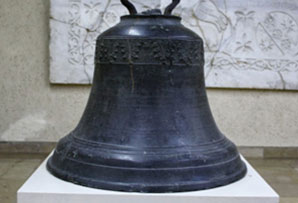
Dr. Alex Rodriguez-Suarez / Bell-ringing: Bells and bell-towers in the Late Byzantine Period (1261-1453)
The use of large bells in Byzantium for religious purposes is a rather unknown aspect. Bell-ringing has not received much scholarly attention and Byzantinists have mainly looked at bell-towers. The study aims to investigate both the written sources and the archaeological remains (bells, bell-towers) in Türkiye. While the remains of bells (Istanbul Archaeological Museums) and bell-towers (Hagia Sophia, Trabzon) are scarce, the study aims to discover new material on this under-researched subject. Researching the real extent of the use of bells in Byzantium will provide us with information about the cultural changes that took place at different levels during the last centuries of Byzantium, resulting in innovations in architecture and religious traditions. (Period: September 2015 – June 2016)
